The Age Of
Corporate Performance Management


Financial Data Management Enterprise Edition (FDM EE)
FDM EE for better data quality in your company:
Financial organizations continuously improve the quality of their internal controls and reporting processes. To achieve these goals, a source view of financial data processes is required.
Oracle Hyperion Financial Data Quality Management, Enterprise Edition (FDMEE) is a solution that enables business analysts to develop standardized financial data management processes and validate data from any source system, while reducing cost and complexity.
FDMEE gives the finance user complete control over the integration process to define source data, create mapping rules to translate data into the required target format, and execute and manage the periodic data loading process.
The Key Benefits of Oracle Hyperion Financial Data Quality Management FDMEE
- Easy to use
- Full Audit Trail
- Process monitor
- Open Batch Loader
- Drill through to source
- Out-of-the-Box Reports
- Write-back support from all EPM applications
- Support for multiple platforms (not only Oracle)
Step 1 Import
During the import, the source data is loaded into the FDM module and brought into a uniform structure. Both structured data from databases or the ERP system (such as Oracle or SAP) can be connected directly, and unstructured information can be imported via flat files.
In any case, the original file is preserved after the import and all processing steps are logged in a traceable manner. The imported data can also be enriched with additional information in this first step.
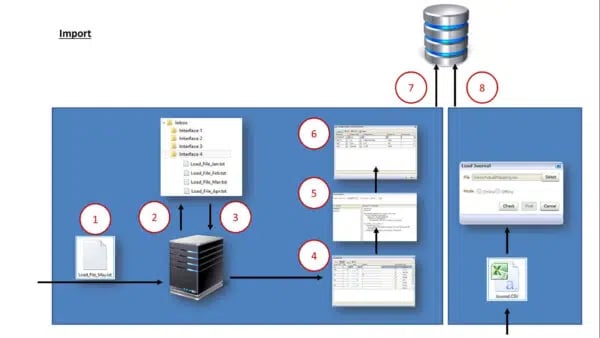
Step 2 Validate
During the validation process, the data now loaded into the FDM EE is automatically matched with the target system. This not only verifies that all accounts have been assigned to a corresponding target account, but also that all required information is available. Missing information can be supplemented by standardized rules
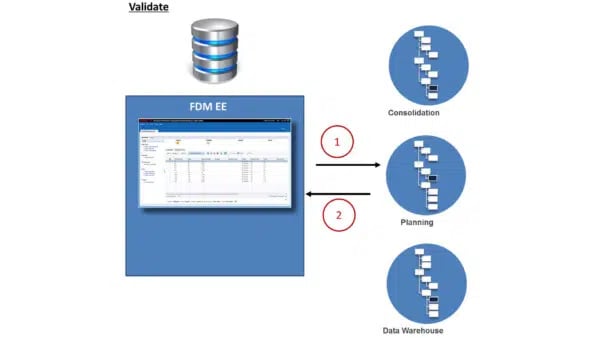
Step 3 Export
The export step loads the data into the target system (e. g. e.g. Hyperion Financial Management or Hyperion Planning) and optionally triggers the calculation logic present in the target system, e.g. currency conversions or consolidation
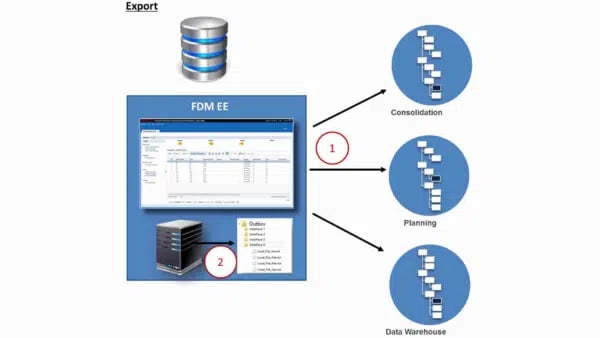
Step 4 CHECK
If validation rules are available in the target system, the aggregated or calculated values can be retrieved and checked in the form of check reports.
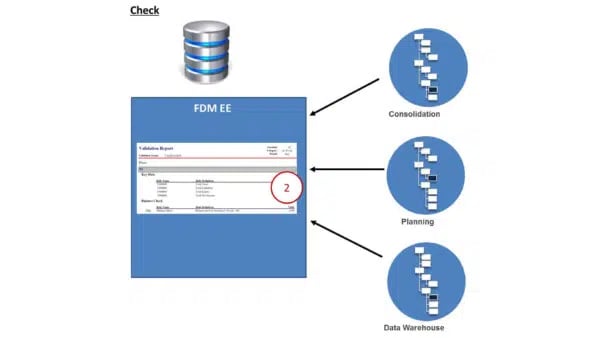
Hyperion FDMEE Architecture
Oracle Hyperion Financial Data Quality Management, Enterprise Edition is the key application for integrating Enterprise Resource Planning (ERP) systems with Oracle’s Hyperion EPM applications. FDMEE is accessed through the Oracle Hyperion Enterprise Performance Management workspace, which uses Oracle Hyperion Shared Services to authenticate users. The key to integration lies in the underlying engine Oracle Data Integrator.
FDMEE is based on Oracle Data Integrator and coordinates the transfer of metadata and data in EPM applications. The application server can be deployed on multiple platforms (see Oracle Hyperion Enterprise Performance Management System Certification Matrix) and connects to EPM applications such as Oracle Hyperion Financial Management, Oracle Hyperion Planning and Profitability , Account Reconciliation Manager and Oracle Essbase. View with the EPM Viewer.
The Hyperion EPM on-promise components
Streamline financial close with comprehensive consolidation and close including complex consolidation support, tight processor orchestration, and supplemental data capture.
Create accurate, interconnected plans – from long-term planning to regular rolling forecasts and business unit planning – that incorporate best practices as needed. Whether you work in corporate financial planning and analysis, sales, marketing, human resources, IT, supply chain, or operations.
Use the multidimensional database Essbase for quick evaluations of your business fields.
Optimize the data quality of your company by using FDM EE. Probably the only completely “audit-proof” solution on the market
Create a central point to manage your metadata. Improve your master data management with DRM and create seamless transparency between all connected systems
Meet internal and external reporting requirements – collaborative reporting and regulatory reporting with interactive dashboards
The Oracle EPM Cloud Components
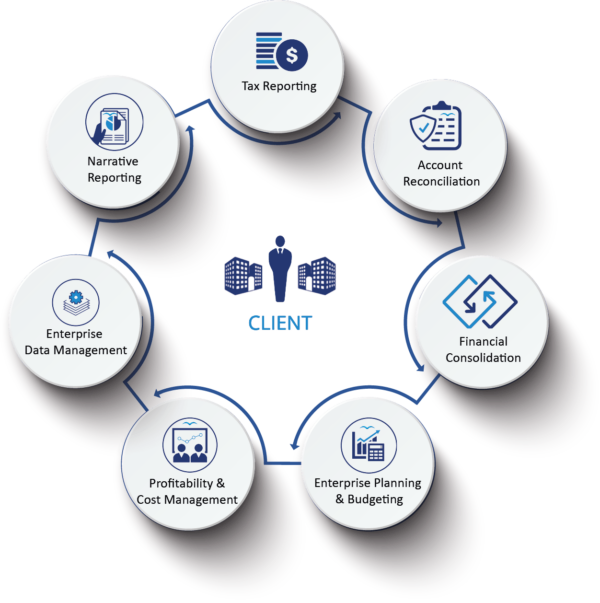
Streamline your financial close process and leverage a comprehensive consolidation solution. FCCS offers a holistic approach, from data collection to consolidation to compelling dashboards.
Start your tax reporting in the easy-to-use Oracle EPM Cloud. Maintaining control processes with the integrated configuration wizards has never been easier. By aligning tax reporting with corporate financial reporting, you get seamless transparency between taxes and finance.
EDMCS enables enterprise data control, change data visualization, and hierarchy management across your entire system landscape from a central point.
Use the best-practice approach and benefit from ready-made modules in the areas of finance, human resources, capital, IT project planning. Start now with accurate, holistic planning across your entire business units.
Meet internal and external reporting requirements and streamline your reporting process with Narrative Reporting in Oracle EPM Cloud.
This solution provides a secure, collaborative, and process-driven approach to defining, authoring, reviewing, and publishing financial and management reporting packages.
Streamline your global reconciliation process with Oracle ARCS. Save time by automating your reconciliation tasks. This cloud solution includes two different modules: Reconciliation Compliance and Transaction Matching.
PCMCS helps you understand the root causes of your costs and revenues. Control profit and cost impacts through rapid assumption changes to manage and increase profitability.
Based on PBCS, we offer this predefined solution for reporting and simulation of transfer pricing calculations. Our solution supports you with a high degree of automation, simulation of scenarios, profitability and variance analyses, transparent cost and revenue allocations, and reporting and documentation.
Data Management helps you easily connect data from various sources. Data management is an integral part of every EPM module. You can easily extend the data loading process and load exchange rates directly from the bank into your EPM system if needed. Automated, of course.
Are you looking for something different?
Find more leading CPM providers here:

